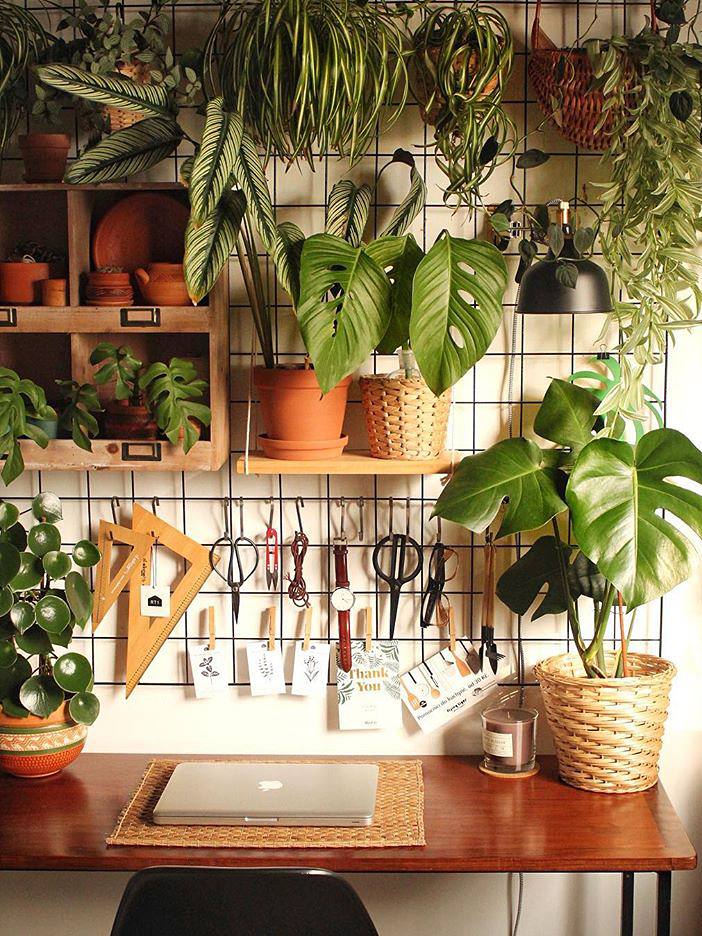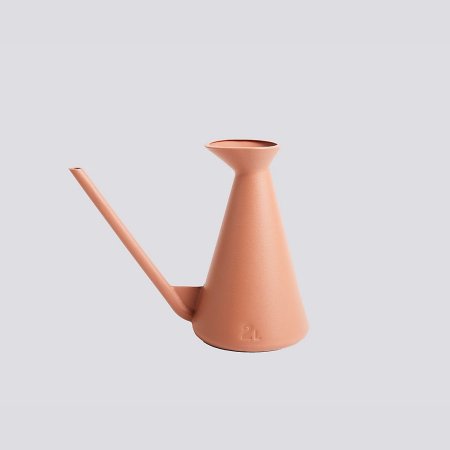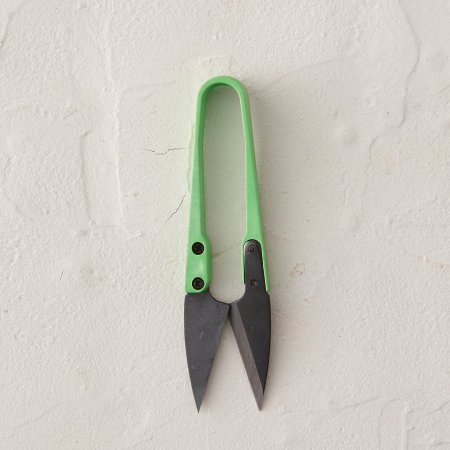We may earn revenue from the products available on this page and participate in affiliate programs.
There’s much to love about the monstera plant: It’s easy to care for; it’s a great finishing touch in any style space; and it’s fondly named after cheese. (True story: It’s called the Swiss cheese plant for its numerous holes and ridges.) You’ve also likely seen it in the corner of every designer/blogger/Instagram plant parent’s home these past few years—or at least a version of it. Monstera deliciosa usually gets all the attention, and though we’re not ready to say goodbye to it yet, we have our eye on its more low-key sibling, the Monstera adansonii. We’re seeing it more and more in the spaces we feature, and Paris Lalicata of The Sill reports a spike in interest over the past few months (she chalks it up to the funky leaf shape).
The main difference between the two is cosmetic: The adansonii has longer, tapering leaves, with more delicate holes that congregate in the center of each frond. This type is also a bit harder to find (though thanks to the popularity of its Insta-famous counterpart, it’s getting easier to track down), but once you do, the care for it is basically the same as any monstera—aka definitely manageable. “Don’t let those huge, exotic leaves fool you,” says Lalicata. “If a first-time plant parent wanted to try this out, I wouldn’t question it. As long as you do the research, you should be set up for success.”

We’ve gone ahead and compiled all the important info for you. So if you’re looking to branch out (pun intended) and add a trendy bit of greenery to your collection, here’s how to care for your new plant pal.
Where should I house it?
The foliage is toxic if consumed, so keep your plant away from pets and children. Lalicata recommends using stands or even wall and ceiling hangers. By keeping it high up and away from curious hands you’ll also get to make the most of its trailing leaves.
How much sun does it need?
Monsteras are pretty laid-back, but the one thing they won’t tolerate is low light. They’ll do best in stable or slightly warm environments with plenty of natural rays streaming through—medium-bright indirect is best. Oh, and it helps to consider the geography of your home, too. “Avoid southern exposure, as too much direct sun can scorch the leaves,” says Lalicata.

How often should I water it?
What makes Monstera adansonii so great for rookies is that you don’t have to fawn over it 24-7. In fact, it’s best if you leave it alone to let the soil completely dry out between waterings, which means you’ll probably only have to give it a gulp once a week. In the fall and winter (when most indoor tropical plants go semi-dormant) you can space those sessions out even more.
If you really want to make your plant feel at home in a tropical climate, even if you live in a tiny apartment, try keeping it in a humid room like a bathroom or kitchen. This will make your hydrating schedule even easier.
What do yellow leaves mean?
The biggest red flag that something is wrong is a yellowing leaf. “These chlorotic leaves are unable to bounce back and should be pruned,” says Lalicata. She notes that a change in color can mean any number of things, so try pairing that symptom with something else to properly diagnose the problem. For example: You have yellow leaves and the potting mix has been wet for days (too much water), or the leaves are yellowing and the plant looks like it’s too large for its current planter (the roots are bound together). What you want is healthy, green, and compact foliage with new growths sprouting out.

Can I propagate it?
Yes! You can try propagating your Monstera adansonii using stem cuttings rooted in either water or soil. Lalicata recommends water if you’re just starting out (head to The Sill for a quick tutorial), though she says it’s easy to do both ways. “As long as you have one exposed node available, any cutting will have the chance to form roots,” she explains. Turn your friends into plant parents, too, and gift them a stem—it’s definitely a more memorable hostess present than just another bottle of wine.
Shop our Monstera adansonii kit:
See more plant stories: These 9 Plants Can Reduce Stress and Improve Productivity This Popular Houseplant Is Virtually Impossible to Kill How to Care for Your Bird-of-Paradise, the Fiddle-Leaf Fig’s Less-Fickle Friend





